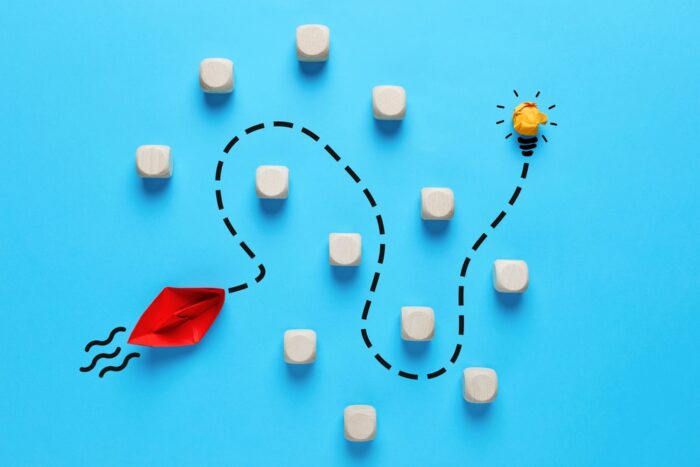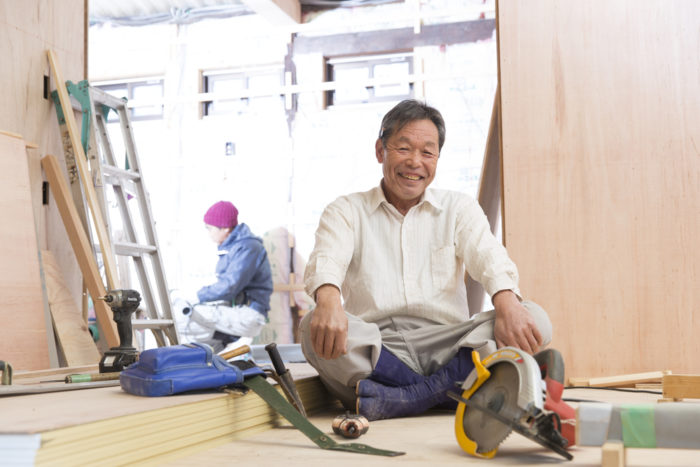
5S in the Japanese workplace – shitsuke: sustaining through discipline (part 5 of 5)
Articles, Japanese business keywords
The Great East Japan Earthquake and shitsuke
In the first four articles in this series, we have been looking at the roots of 5S practices– Seiri (sorting), Seiton (organizing), Seiso (cleaning, shining), Seiketsu (sanitizing, standardizing)—in the values and practices of traditional Japanese culture.
Today’s final article in the 5S series looks at Shitsuke (sustaining). When I began writing this series, I thought that shitsuke would be the hardest one to describe properly. The Great East Japan Earthquake and resulting tsunami changed everything. People around the world are shocked and dismayed by the terrible devastation, and sympathize with the victims of the disaster. At the same time, they are impressed by the calm and orderly actions of the Japanese people. There is none of the chaos and looting that often accompanies natural disasters in other countries. The media has used words such as “the remarkable resiliency of the Japanese” and “their vast reservoir of social strength.” The Japanese response to the March 11 disasters is a perfect illustration of the cultural value of shitsuke.
Shitsuke (しつけ or 躾)
Shitsuke is usually written with Japanese hiragana syllables rather than the kanji characters derived from Chinese. The kanji is has the symbol for “body, self, soul or mind” on the left side, and the symbol for “beauty” on the right. It means “training or discipline,” as in child-rearing or discipline in schools, but it also means “self discipline,” or internalized, self-motivated discipline. Discipline from the outside should gradually and naturally transform into self discipline as a person matures. Discipline then becomes a continuous practice or a state of being.
As we have seen from the Japanese response to the recent tragic events, the discipline instilled in Japanese from childhood does not collapse, not even in a disaster.
Childhood Training
In Japanese schools, teaching children self control is as important as teaching academic content. Taking turns, cooperation and looking out for the needs of others before oneself are constantly reinforced. Selfish behavior and looking out for oneself at the expense of others is punished by social disapproval. In addition, consensus-building is practiced at school and in social activities. In situations where Americans might need to resolve who is the leader or whose idea is best before any action can take place, the Japanese are able to mobilize and form a consensus relatively quickly.
Sustainability
In the 5S workplace, shitsuke means following the processes that have been determined by the first 5S activities—sorting, organizing, cleaning and standardizing—on a regular basis, not just when things start getting out of hand. This is accomplished by scheduling, checklists and evaluations. Scheduling ensures that tasks are performed regularly. Checklists that describe in detail the required tasks are posted and actively checked off every time. Tasks are assigned to individuals, but everyone is collectively responsible to make sure all tasks are completed. In addition, periodic evaluations of progress are carried out by supervisors. The purpose is the constant practice of good habits and the elimination of bad ones.
Communication
Communicating processes is not that easy. Sometimes language is not enough. The safety instruction says, “Stand at least 50cm from the machine.” The sentence itself is clear, but not everyone has a sense of 50cm. Therefore, as a visual clarification and reminder, a tape marking is placed on the floor 50cm from the machine, letting everyone know what areas are unsafe. Communication discipline means using language that is clear, and checking that people have understood properly. It means using visual communication as well as verbal.
Leaders model good behavior
After the earthquake Prime Minister Kon and the members of the Japanese cabinet changed from their usual business suits to the work uniforms usually seen in factories. This expressed their determination to work to get the situation under control. Government spokesman Yukio Edano made his televised statements in an apparent constant state of exhaustion. Similarly, in a Japanese workplace, everyone, even the executives, are expected to pull together and do what needs to be done in an emergency.
Voluntary self-restraint
During the height of the crisis, bars and restaurants saw a severe drop in their business. Even Japanese who were not directly affected felt that they could not feel good about enjoying themselves while others were suffering. Most people restrained from panic buying of staples such as toilet paper, even though many were anxious about those items becoming in short supply.
Common sense
Shitsuke means that once processes and attitudes are internalized, workers voluntarily carry out the 5S activities without having to be reminded. It should not be necessary to reward workers to perform their assigned tasks, or discipline workers for not doing them. Workers should continue to practice the activities even after moving to different work areas. Shitsuke means not just following the rules, but using the brain to recognize and respond appropriately to 5S challenges. It means using common sense.
After the earthquake, the Japanese in the affected areas display tremendous self control that is also “common sense.” People keep an appearance of calm even though they are suffering inside. They feel that if they let their feelings show, people around them will start to panic. And if there is panic, the situation could become quickly out of control and everyone would suffer more. So they keep these painful feelings to themselves. This is so different from the usual American view that it is healthy to express these feelings.
Putting shitsuke into practice
Fortunately, most of us will never be called upon to practice the painful discipline of the victims of the Great East Japan Earthquake. However, we can keep shitsuke and “common sense” in mind when we work with the Japanese. Without the S of shitsuke, even the most carefully constructed systems of the first 4 S—seiri (sorting), seiton (organizing), seiso (cleaning, shining) and seiketsu (sanitizing, standardizing)—cannot be sustained for long. By following the processes consistently and looking for and eliminating eyesores proactively, we can work more smoothly with the Japanese and enjoy a more productive work environment.
Related articles
Purpose should come from within, but also from outside Japan HQ
Recently an HR director for a Japanese financial services company in Europe told me that he had been
(Video) So, What is Monozukuri Actually?
Monozukuri is one of those well-known and often used Japanese words among people from outside of Jap
(Video) So, What is Ikigai Actually?
Ikigai - The Japanese word for the goal that gets you going - is often misunderstood by non-Japanese




